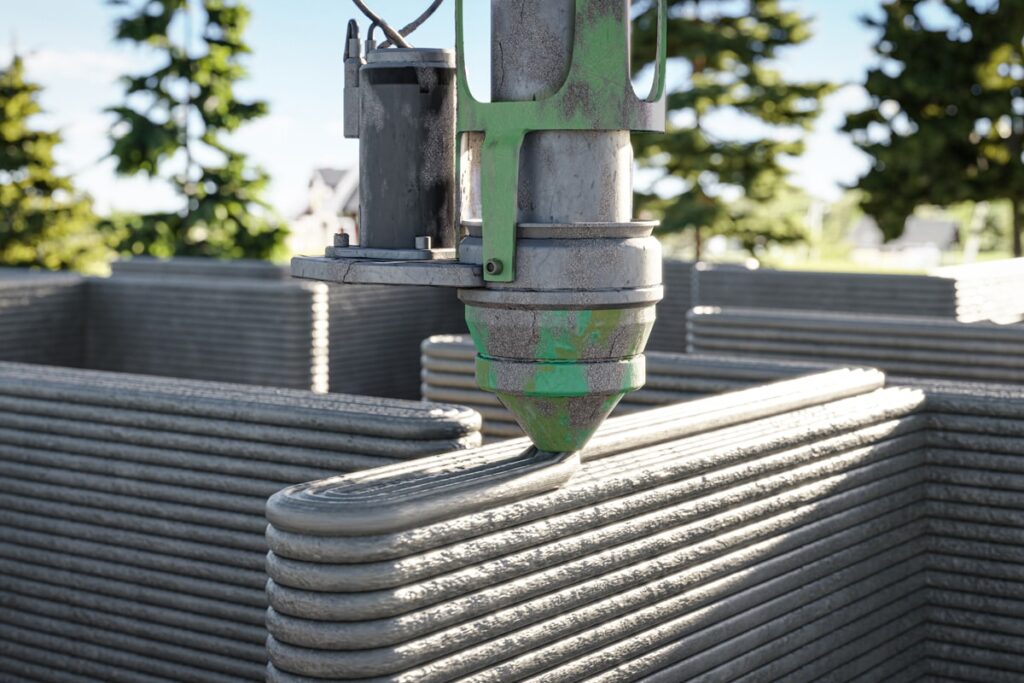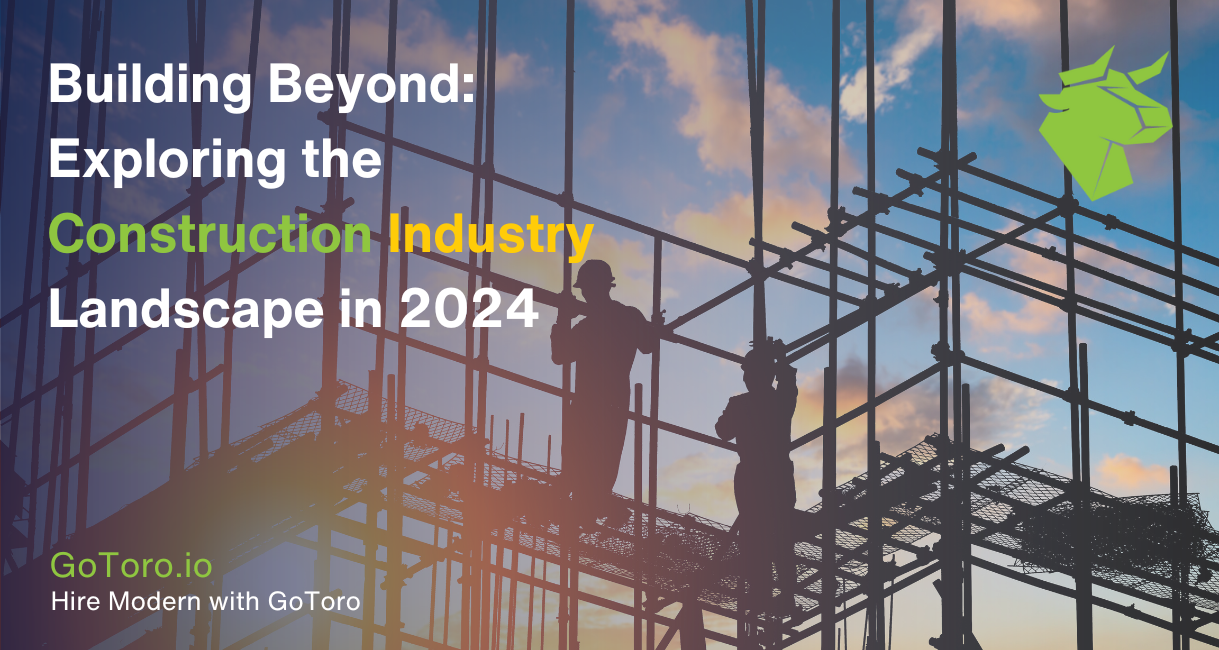As we navigate through 2024, the construction industry continues to stand as a significant pillar of global economic growth, yet it faces a myriad of challenges and opportunities shaped by recent advancements. This construction industry overview delves into the current state of the sector, characterized by rapid technological evolutions, pressing labor market changes, and pivotal economic factors, all unfolding within an increasingly sustainable framework.
Key Themes in the Construction Industry
The landscape of construction in 2024 is defined by several critical themes. The integration of cutting-edge technologies is reshaping construction processes, improving efficiency, and setting new standards. Environmental concerns push the industry towards more eco-friendly practices and materials. Ongoing adjustments in the labor force require strategic responses to manage shortages and leverage new skills. The industry must navigate through the complexities of market fluctuations, including material costs and economic uncertainties, that directly impact project planning and execution.
Technological Innovations in Construction

The adoption of technology in the construction sector has accelerated, bringing profound transformations and setting a robust foundation for future developments.
Breakthrough Technologies Redefining Construction
2024 has seen the rise of several transformative technologies within the construction industry. Artificial Intelligence (AI) is increasingly used for project management and design optimization, helping firms predict outcomes and enhance decision-making processes. Automated robots are now common on construction sites, performing everything from welding and bricklaying to more complex tasks, significantly speeding up construction timelines. 3D Printing technology has moved beyond prototyping to actual construction, enabling the printing of complex building structures directly on-site and revolutionizing traditional building methods.
Benefits of Technological Advancements
The integration of these technologies in construction projects brings multiple benefits. Technologies like AI and robotics streamline operations, reduce the time for project completion, and minimize human error. Advanced technologies can lower overall project costs through efficient resource management and reduced labor requirements.
Challenges and Industry Responses
Despite the benefits, the adoption of these technologies also presents challenges. The cost of implementing advanced technologies can be prohibitive for smaller firms. There is a growing need for skilled professionals who can operate and manage these new technologies. Ensuring that new technologies comply with existing regulations and do not compromise worker safety remains a critical concern.
The construction industry’s response has been proactive—investing in training programs, forming partnerships with technology providers, and engaging in regulatory discussions to ensure a smooth transition into the future of construction.
This construction industry overview in 2024 illustrates a sector that is at a crossroads, poised to redefine its boundaries through innovation and adaptability, responding dynamically to both the challenges and opportunities presented by the modern world.
Sustainability and Eco-Friendly Practices: A Core Component of the Construction Industry Overview

The construction industry’s journey towards sustainability has become a central theme in 2024, mirroring global trends across industries. This shift reflects not just regulatory compliance but also a broader commitment to responsible building practices that ensure environmental, economic, and social sustainability.
The Shift Towards Sustainability in Construction
In recent years, there has been a definitive move towards integrating sustainable practices in the construction industry. This involves adopting construction methods and materials that are environmentally responsible and resource-efficient throughout a building’s life cycle. From planning and design to construction, operation, maintenance, and renovation, sustainability is becoming increasingly embedded in every facet of construction.
The U.S. government is championing sustainable construction practices through initiatives like the Federal Buy Clean Initiative, which has directed over US$2 billion towards the procurement of lower-carbon materials such as asphalt, concrete, and steel. Furthermore, an additional US$100 million has been allocated to support purchases of building products derived from converted carbon emissions by state and local governments, as well as public utilities (Deloitte Insights, 2024).
Examples of Green Building Materials and Energy-Efficient Technologies
The use of green building materials such as recycled steel, insulated concrete forms, and low-emission glass and paints has seen a significant increase. Additionally, energy-efficient technologies like solar panels, smart windows, and advanced HVAC systems are being widely adopted in new construction projects. These technologies not only reduce the environmental impact but also offer long-term cost savings, making them attractive investments for developers and clients alike.
The Inflation Reduction Act (IRA) plays a pivotal role in promoting sustainable construction by incentivizing energy-efficient upgrades. Over US$1.7 billion has been allocated for enhancements such as improved insulation, advanced lighting, and more efficient HVAC systems, complemented by additional tax credits. These investments not only promote operational efficiency but also significantly reduce the long-term lifecycle costs associated with sustainable construction, through the adoption of high-performance facades and energy-saving systems (Deloitte Insights, 2024).
Responding to Client Demands and Strategic Sustainability Imperatives
The growing client demand for sustainable buildings is driving the construction industry to adopt these practices. More clients are looking for buildings that not only minimize environmental impact but also provide healthier living spaces for occupants, resulting in higher property values. Strategic imperatives for sustainability are not just about adhering to regulatory demands but also about positioning companies as leaders in a competitive and evolving market.
Addressing Labor Shortages: Key Insights from the Construction Industry Overview

The construction industry has faced persistent labor shortages, a challenge that has continued into 2024. These shortages pose significant risks to project timelines and costs but also present an opportunity for the industry to innovate and improve its practices.
Michael Bellaman, President and CEO of ABC, emphasizes the critical need for workforce expansion in the U.S. construction industry, stating that about half a million new workers are required in 2024 to balance supply and demand. He warns that without a comprehensive strategy for workforce development, there could be significant slowdowns in enhancing our built environments, worker productivity, and the quality of communal spaces such as hospitals, schools, and workplaces.
The urgency to address labor demands is underlined by a study from Associated Builders and Contractors, which projects that the construction industry will need to recruit an estimated 501,000 additional workers in 2024 alone, beyond the normal hiring rate, to meet labor demands. Looking ahead to 2025, even with a forecasted slowdown in construction spending, the industry is still expected to need nearly 454,000 new workers (ABC, 2024).
Analysis of Ongoing Labor Shortages
Labor shortages in the construction industry are largely due to a combination of aging workforce demographics, insufficient entry of younger workers, and the cyclic nature of construction work which can deter long-term commitment. The shortage is most acute in skilled trades such as carpentry, electrical, and plumbing, which require both technical skills and significant experience.
Industry leaders are urged to proactively address a looming crisis, as reports by McKinsey and Deloitte indicate severe shortfalls in the workforce. By 2030, the U.S. is expected to experience a deficit of 300,000 engineers and 90,000 skilled technicians, with the semiconductor sector alone facing a potential shortage of up to 90,000 workers in the coming
Strategies for Attracting and Retaining Skilled Workers
Construction companies are increasingly focusing on recruitment strategies that target younger demographics, including enhanced outreach to high schools and vocational schools. Offering competitive wages, benefits, and clear career progression paths are other key strategies. Additionally, firms are investing in worker training and development programs to not only attract but also retain talent.
Impact of Training Programs and Technological Integration
To address the skills gap, construction firms are deploying extensive training programs that not only cover technical skills but also focus on digital tools that are becoming indispensable in modern construction practices. Technological integration, such as the use of building information modeling (BIM) software, drones for surveying, and project management tools, requires ongoing education and training. These programs are essential for keeping the workforce current with industry standards and best practices, ultimately enhancing productivity and job satisfaction.
This construction industry overview in 2024 highlights a sector actively adapting to meet its challenges—be it through embracing sustainability or addressing workforce needs—with a clear vision for a more efficient, responsible, and productive future.
Economic Impact and Market Fluctuations: Insights from the Construction Industry Overview
The construction industry remains a substantial contributor to global and national economies, with its impact extending far beyond the creation of physical infrastructure. The economic dynamics of this sector are influenced by a variety of market fluctuations which have notable implications for 2024 and beyond.
Examination of the Construction Sector’s Economic Contributions in 2024
The construction industry continues to drive economic growth by creating jobs, stimulating investment, and fostering development in related sectors such as manufacturing and retail. Investments in infrastructure and residential projects contribute significantly to economic health, with multiplier effects that enhance productivity across the economy.
Impact of Market Fluctuations on the Industry
In 2024, the construction industry faces various economic pressures including fluctuating material costs, inflationary trends, union activities, and political uncertainty. These factors can lead to increased project costs and delays, affecting profitability and strategic planning. Material cost volatility, in particular, remains a critical challenge, demanding agile procurement strategies and effective risk management.
Predictions on How These Factors Might Influence Future Industry Trends
Looking forward, these economic and market fluctuations are expected to drive innovation in cost management, procurement, and contract structuring within the construction industry. Companies might increasingly turn to technology and sustainable practices not only to mitigate risks but also to gain competitive advantages in a fluctuating economic landscape.
Regulatory Environment: A Construction Industry Overview
Regulatory changes pose both challenges and opportunities for the construction industry, impacting how projects are planned, executed, and managed.
Overview of New or Changing Regulations Affecting the Construction Industry
In recent years, there has been a significant shift in the regulatory landscape, influenced by increasing environmental concerns, safety standards, and technological advancements. New regulations often focus on reducing the environmental impact, improving worker safety, and ensuring the structural integrity and energy efficiency of buildings.
Discussion on How Companies are Adapting to These Regulatory Shifts
To adapt to these regulatory changes, construction companies are investing in compliance programs, training, and technology adoption. Integrating regulatory requirements into the project lifecycle has become essential, necessitating updates to operational procedures and the adoption of more rigorous compliance measures.
The Future Outlook: Trends Shaping the Construction Industry Overview
As we look to the future, the construction industry is poised for significant transformations influenced by evolving technologies, market demands, and global economic conditions.
Predictions for Significant Trends Over the Next Decade
In the next decade, significant trends such as digitalization, modular and prefabricated construction, and increased automation are expected to dominate the industry. These trends will likely enhance efficiency, reduce costs, and enable more complex architectural designs.
The Role of Emerging Markets and Potential for International Collaborations
Emerging markets are becoming increasingly important in the global construction landscape, offering new opportunities for growth and innovation. International collaborations could further enrich the industry, bringing in new expertise, technologies, and practices. These collaborations will be critical in addressing global challenges such as urbanization, climate change, and housing shortages effectively.
This comprehensive overview of the construction industry in 2024 underlines a sector that is adapting dynamically to economic, regulatory, and technological shifts, positioning itself to meet future challenges with resilience and innovation.
Reflections on the Construction Industry Overview
As we conclude our exploration of the construction industry in 2024, it’s clear that this sector is experiencing a period of intense evolution and growth, driven by several key themes. This construction industry overview has unpacked the pivotal roles of technological innovations, sustainability initiatives, labor market dynamics, and economic challenges—all of which are shaping the future of construction.
Recap of the Main Themes Discussed
The construction industry has embraced technologies such as AI, robotics, and 3D printing, enhancing efficiency and revolutionizing traditional practices. A shift towards more sustainable and eco-friendly practices is significantly influencing project planning and execution, driven by both regulatory demands and market preferences. The industry’s response to ongoing labor shortages through innovative recruitment and retention strategies highlights its adaptive approach to workforce challenges. Navigating economic fluctuations that impact material costs, inflation, and political landscapes remains a critical focus for sustaining growth and stability.
Encouragement for Ongoing Adaptation and Innovation Within the Industry
The journey ahead for the construction industry requires a continued commitment to adaptation and innovation. By embracing change, companies can ensure they remain competitive and capable of meeting the evolving demands of the market and regulatory environments. Innovation is not just a pathway to efficiency and cost savings, but a strategic necessity that enables resilience and long-term success.
Engage with Emerging Trends and Opportunities
This overview serves as a call to action for all stakeholders within the construction industry to engage proactively with the emerging trends and opportunities. Whether you are a developer, contractor, policy-maker, or technology provider, your active participation is crucial. By collaborating, sharing insights, and investing in the future, the construction industry can continue to build beyond current boundaries and challenges. To effectively navigate the challenges of the construction industry, explore how Gotoro can enhance your workforce. Request a demo today and discover the latest talent solutions tailored for your needs


